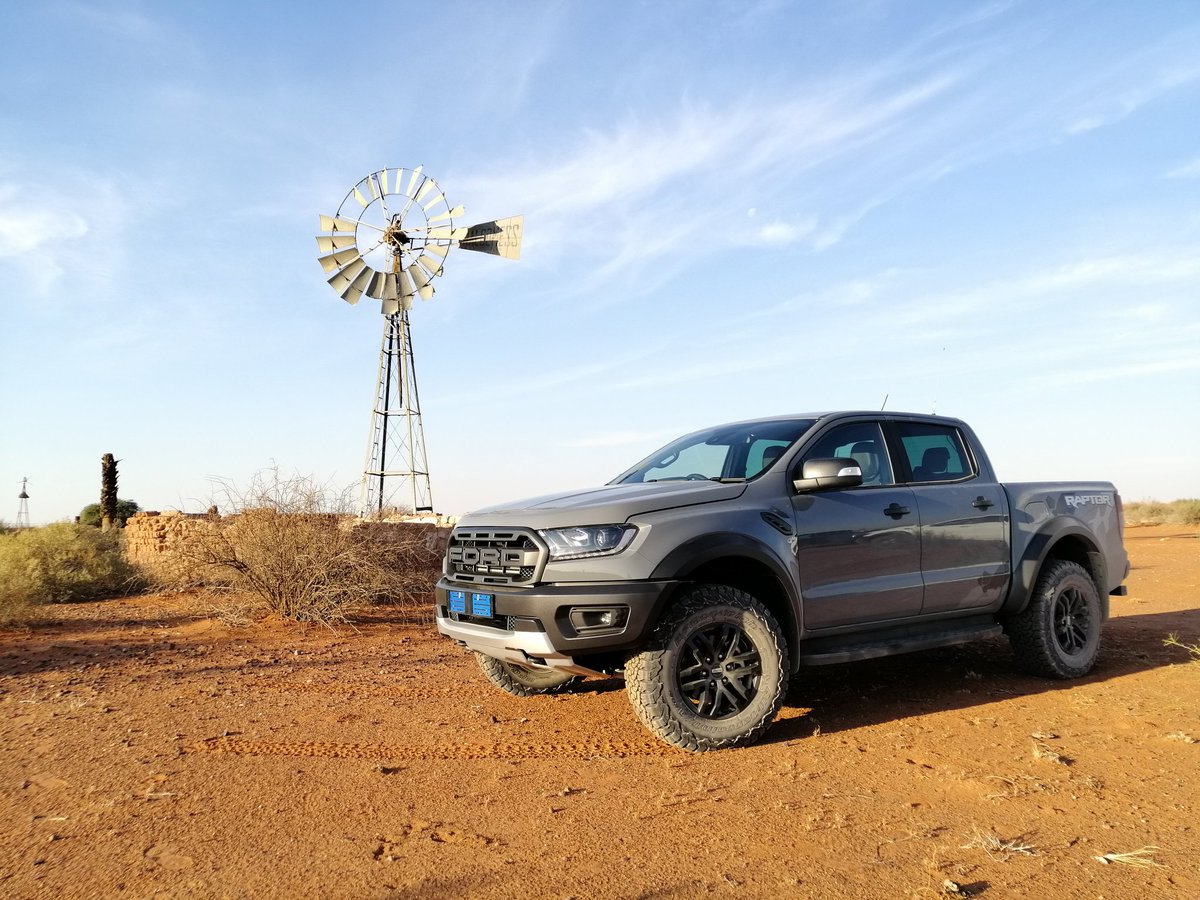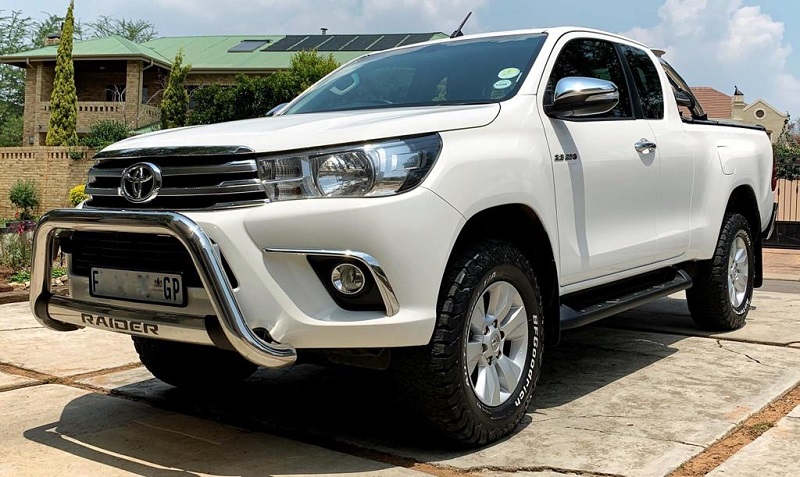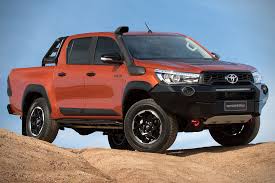No room at Mercedes US plant to manufacture C-Class because of SUV demand – 40 000 vehicle production might move to East London plant.
Ford’s hotly anticipated Ranger Raptor has finally been launched in South Africa and putting one in your garage (or farm shed) is going to cost you R786 400
The resale value of any vehicle – bakkies included – is significant when shopping for wheels. More so when it comes to companies that often operate pick-up fleets.
South Africa’s vehicle production is expected to expand by 6.2% in 2019, to roughly 648 000 units, compared with 2018, says the National Association of Automobile Manufacturers of South Africa (Naamsa) in its latest quarterly business review.
The Toyota Hilux remained the No.1 selling vehicle in South Africa following another strong showing in April. Kicking off the second term of 2019, the Hilux ended the month on 2411 units sold, more than 770 units clear of the Ford Ranger in second place.
These 5 bakkies are built in South Africa
- Hits: 2283
South Africa’s domestic automotive industry received another vote of confidence this week, as Nissan announced ambitious plans to increase its local bakkie production. The announcement that a diverse configuration of Navara's will be built in Rosslyn, Pretoria by 2020, is the latest chapter in South Africa becoming a global bakkie assembly hub of choice.
Here are the locally built bakkies we can justifiable be proud of as local automotive enthusiasts.
Toyota Hilux
Topping our list, obviously, is the Toyota Hilux. Built in huge volumes by Toyota’s Prospecton facility in KZN, Hilux has been a bedrock of South African bakkie production for decades and is a major enabler of smaller component supplier business in the greater Durban area.
Toyota invested R6.1bn to establish tooling and a local supply chain for assembly of the current eight-generation Hilux in South Africa. It has been a monumental success and is South Africa’s most popular vehicle.
Ford Ranger
South Africa’s second most popular bakkie and by far Ford’s most important investment in Africa. The American brand has two locations for Ranger production in South Africa, final assembly in Silverton, and engine production in Port Elizabeth.
Between these two domestic production assets, Ford builds Ranger bakkies for both local demand and export to a diversity of international markets. Ford has spent a lot of money to ensure that its South African operations can scale sufficiently to any increase in Ranger demand.
To its credit Ford headquarters, in Michigan, has entrusted its local managers, engineers and technicians with a R3bn investment to secure production of the facelifted T6 platform Ranger, which includes domestic assembly of its high-performance Raptor variant. A terrific vote of confidence in the quality of local automotive labour and management skills.
Isuzu D-Max
After divorcing its domestic operations from General Motors in late 2017, Isuzu inherited the KB production line at Struandale, Port Elizabeth. Since then the Japanese brand, known primarily for its diesel engines, has been repositioning its local bakkie portfolio, whilst steadying production.
Although Isuzu does not use its South African factory as notable international production hub for exports, it did rename the local bakkie portfolio to D-Max late last year and invested a further R27m in its Mzansi operations.
Mahindra Pik-Up
By far the most successful Indian vehicle brand in South Africa, Mahindra has gradually been increasingly its bakkie business.
Last year local demand for the brand’s Pik-Up bakkies increased to a volume which justified the investment in light domestic assembly. Mahindra dedicated an initial R10m to building a compact assembly facility in Durban, geared to a capacity of 2500 bakkies per year.
Nissan Navara
The only local manufacturer to build two different bakkies - NP200 and NP300 - Nissan South Africa will spend R3bn in the next few years to become a production hub for the Japanese brand’s next-generation Navara.
Nissan South Africa will become a production hub for internal and African markets, building all configurations of the future Navara. This will be a happy return to building a contemporary full-size bakkie at Rosslyn and attribute the unique status to Nissan South African, of assembling three different bakkie models in one factory: NP200, NP300 and Navara.
Newsletter Subscribe
AGRI NEWS NET "LIVE" FEED
- CRA Media independence is the absence of external control and influence of any other media. Our capacity is to "make decisions and act according to its logic," and distinguishes us from the vast majority of media- Committed, focused and always on time- Good positive News you can trust- We not part of the negative sensational news media of the 2025 century.
- This is AGRI NEWS NET- the world of Farming and Agriculture in your hand. "Good" News you can Trust- Updated 7 days a week- bringing you the latest News in Farming and Agriculture from all over the world. Tomorrow at 6 AM South African time you can start browsing again.
- First things first, scotch is actually a whiskey, er, whisky. Whiskey is the spelling in the United States and Ireland. Whisky is the spelling in Canada, Japan, and Scotland. What sets Scotch whisky apart from other whiskies is that Scotch whisky is entirely produced and bottled in Scotland. There is no wrong way to drink Jameson Irish Whiskey but, we do ask you to drink responsibly.
- We have Over 1000 professional Audio cast recordings- Its very popular- Click on the link and follow us. Our Audiocast include a weekly AGRI RUSH- Headline s of the week.
Popular News Tags
AGRI NEWS NET AUDIO CAST Feeding-
- What Needs to Change in Farming and Agriculture in 2025
- AGRI NEWS RUSH - News Headlines of the Week 18/01/2025
- Farmer safety in South Africa in 2025
- The Economics of Farming and Agriculture in South Africa 2025
- The global wine market 2025
- AGRI NEWS RUSH - News Headlines of the Week 11/01/2024
- Artificial Intelligence: All That Glitters Is Not Gold
- GLOBAL WATER OUTLOOK TO 2025 Averting an Impending Crisis

















